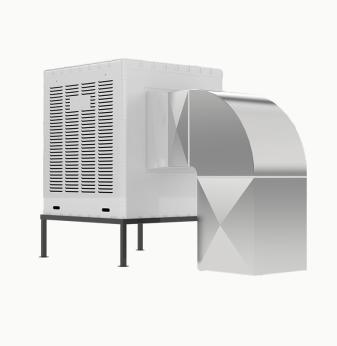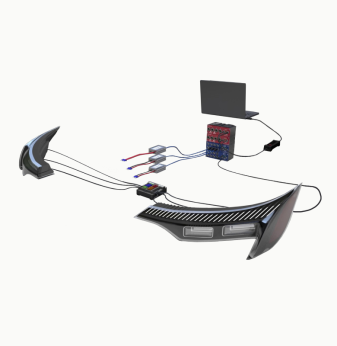The Rise of Cross-Disciplinary Engineering Teams in Embedded Product Development

Getting Started: From Silos to Synergy
Embedded product development has traditionally been organized in silos: hardware teams, firmware developers, mechanical engineers, and industrial designers each worked in sequence — often leading to miscommunication, design mismatches, and time-to-market delays.
But in 2025, cross-disciplinary engineering teams are becoming the norm. These integrated squads combine expertise across hardware, software, UI, and systems — working together from day one.
Why? Because complex connected products require fast iteration, deep integration, and tight alignment between form, function, and experience.
Why Cross-Functional Collaboration Is Now Critical
- Connected complexity: Devices now include sensors, edge AI, cloud links, and advanced UI
- Time-to-market pressure: Over-the-wall handoffs delay delivery and reduce flexibility
- Certifications and compliance: Require tight coordination between HW, FW, and test teams
- User experience focus: UX must be embedded in both physical and digital design
What Cross-Disciplinary Teams Look Like in Practice
Modern embedded teams include:
- Hardware Engineers: PCB design, power optimization, component sourcing
- Embedded Software Developers: RTOS setup, drivers, bootloaders, OTA
- Mechanical Engineers: Enclosure design, thermal planning, DFM constraints
- UI/UX Designers: Screen flows, button layout, accessibility, branding
- Systems Engineers: Integration, reliability testing, system-level behavior
- Test Engineers: Functional automation, fixture design, validation metrics
These roles collaborate using agile workflows, digital twins, shared documentation systems, and overlapping ownership.
Benefits of Cross-Disciplinary Development
| Benefit | Impact |
| Early issue discovery | Fewer redesigns, reduced NPI delays |
| Parallel development | Faster time-to-market |
| Aligned user experience | Unified hardware/software design language |
| Better risk management | Joint ownership of certifications, quality, scalability |
| Continuous feedback loops | Real-world iteration during development, not after |
Real-World Example: Smart Medical Device
A European healthtech OEM worked with Promwad to develop a wearable ECG monitor. Rather than passing designs between departments, they created a unified team of:
- HW engineers (low-noise analog design)
- FW engineers (BLE + secure OTA)
- UI/UX designers (real-time waveform feedback)
- Mechanical engineers (skin-safe materials and thermal dissipation)
Results:
- Achieved ISO 13485 and CE mark with no delays
- Cut development time by 22%
- Created a consistent brand experience across hardware, mobile app, and packaging
Tools and Practices That Enable Cross-Functional Teams
- PLM/ALM platforms: Unified management of requirements, versions, certifications
- Agile sprints: Time-boxed iterations with clear ownership and shared demos
- Digital twins: Simulate full-device behavior across disciplines
- Shared workspaces: Not just Slack, but collaborative design environments (e.g., GitHub, Figma, Altium 365, Jira)
- Co-located or hybrid pods: Integrated teams meet regularly to align design intent

Promwad’s Role in Building High-Performing Engineering Teams
At Promwad, we:
- Assemble cross-functional teams tailored to each product’s needs
- Use integrated design and validation workflows from concept to scale
- Facilitate collaboration between clients and engineers through shared platforms
- Coordinate HW/FW/UI development cycles using agile and systems engineering methods
Whether you’re launching a medtech device, automotive controller, or industrial sensor, our teams work as an extension of yours — holistically, not in silos.
Future Outlook: AI and Systems Thinking in Embedded Teams
- AI-Assisted Co-Engineering
AI copilots and generative tools are increasingly used to auto-generate firmware code, verify electrical designs, and simulate thermals.
Teams will need to align human creativity with machine-augmented development. - Cybersecurity Integration
Security is no longer a post-launch patch — it’s a responsibility shared across hardware, firmware, and cloud teams.
Security-focused engineers will increasingly become core members of embedded squads. - Systems-Level Certification Ownership
Regulatory certifications (e.g., ISO 26262, ISO 13485, IEC 62304) now span multiple disciplines.
Cross-functional documentation and traceability are critical — everyone shares audit responsibility. - Talent Convergence
New hybrid roles are emerging: mechatronics developers, embedded ML engineers, systems UX architects.
Continuous learning and domain crossover will define tomorrow’s engineering workforce.
Final Thoughts: Teams That Build Together, Win Together
In 2025, the best embedded products aren’t just well engineered — they’re well integrated. Cross-disciplinary engineering is the new baseline for innovation, speed, and reliability.
By aligning technical roles and design thinking from the start, you gain more than efficiency. You build better products — faster, smarter, and with fewer surprises.
Our Case Studies in Hardware Design












